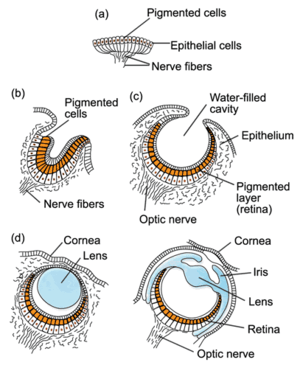Everyone has seen a dog at some point or another, and most of us have owned them or at least had friends or relatives that have owned one.
But how many of us know these interesting facts about dog biology?
1. Dogs like sweets more than your family cat does. Dogs have about 1,700 taste buds. Compare that to a cat’s taste buds at 473.
2. The evolution of dogs can be traced back 40 million years ago to an animal called Miacis, which was a weasel-like creature that lived in trees and dens. The Miacis then evolved into Tomarctus, the direct forebearer of the genus Canis, the genus from which wolves and therefore dogs are descended.
3. Dogs have three eyelids, including the a nicitating membrane, which is also known as a haw, to keep their eye lubricated and protected. The haw is also the third eyelid.
4. While it is a commonly believed myth, dogs are not, in fact, colorblind. They cannot see as well or as many colors as humans can, but their vision is likely similar to that of what humans see at dusk.
5. Dog’s shoulder blades are not attached to their rest of their skeleton. This always for greater flexibility while running.
6. A dog can locate the source of a sound in 1/600th of second and can hear sounds four times farther away than humans can hear them.
7. Puppies are born blind, deaf, and toothless ‘” and completely defenseless. Touch is the first sense they will develop, and a dog’s entire body is covered with sensitive nerve endings.
8. A dog has 18 or more muscles to move its ear.
9. It is possible that the shape of a dog’s face suggests how long it will live. Dogs with faces more like wolves ‘” sharp and pointed ‘” generally live longer, such as German Shepherds, while dogs with very flat faces, like bulldogs, oftentimes have a shorter life.
10. The oldest definable dog breed appeared in 9,000 B.C. It was most likely a type of Greyhound dog used for hunting.
11. Every dog’s nose print is as individual as a human’s fingerprint. They can even be used to identify them!
12. Dogs can run on average 19 mph; however, the fastest dogs on the earth are Greyhounds, and they can run at speeds of 45 mph.
13. Big, square heads and large ears mean one thing for a dog ‘” being the best at hearing subsonic sounds! For example, take the Saint Bernard.
14. Dogs also beat humans out in the olfactory category being able to smell 1,000 times better than a human. They have more than 220 million scent-detecting cells compared to a paltry 5 million for human beings. The part of their brain that interprets smells is also four times larger than humans.
15. The reason dogs have a wet nose is to help them collect the tiny droplets of chemical in the air that contain smells.
16. Dalmatians are born all-white at birth and develop their spots.
17. French poodles actually originated in Germany (poodle comes from the German pudel and the word pudelhund means splashing dog). Dog scholars speculate that the poodles hair evolved for more efficient swimming. A poodle’s coat is also shaved into that goofy hairstyle to help it swim faster while keeping major joints and vital organs warm in cold water.
18. The smallest dog ever was a Yorkshire Terrier the size of a matchbox ‘” quite literally! It was only 2.5″ tall at the shoulder and only 3.5″ from its nose to the tip of its tail, and it weighed a mere 4 ounces.
Sources:
99 Fun Facts About…
102 Interesting Facts About Dogs




